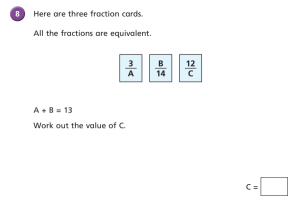The question is :

This was a question taken from a resource meant for 10 year olds. I'm struggling to find an easier way of solving this than going into loads of algebraic working involving algebraic factorising. I'm sure it doesn't require factorisation as it's meant for 10 year olds, but I have no idea how to work it out in a simpler way.
Any help please?
Thanks in advance!

This was a question taken from a resource meant for 10 year olds. I'm struggling to find an easier way of solving this than going into loads of algebraic working involving algebraic factorising. I'm sure it doesn't require factorisation as it's meant for 10 year olds, but I have no idea how to work it out in a simpler way.
Any help please?
Thanks in advance!
